I absolutely adore toucans. They are easily my favorite bird, and I relish any opportunity that I get to see or interact with one. I think it is something about their brilliant coloring, intelligent eyes, and how they truly look different from any other bird that captivates me. However, this list of incredible toucan facts covers more than just their stunning appearance. Here are 12 things about these remarkable birds that make me love them even more.
1. A Toucan's Beak Is Massive

Shutterstock Image
Okay, you probably knew the basis of this already. If you have ever seen a toucan, it is not hard to notice their large and colorful beak. However, I bet you never appreciate just how large their beak actually is. The San Diego Zoo shares that the toucan has "a bill that can be four times the size of its head and nearly as long as the rest of its body." While scientists are not 100 percent certain on why their beak is so massive, the top three theories are: for mating, to ward off predators, and to allow the toucan to reach food on far-off branches.
2. Their Beak Is Light
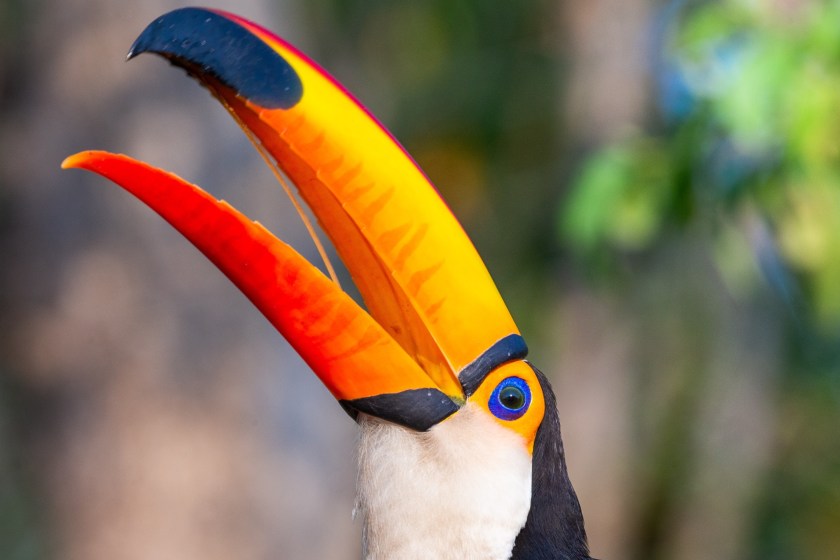
Shutterstock Image
You would think that having a beak so large would mean that the toucan is carrying a lot of extra weight around. However, that is not the case. The beak of the toucan is surprisingly light. That is because their beak is mostly hollow except for "a network of bony fibers that run crisscross through the top for strength and support." San Diego also shares that their beak is made of keratin, which is the same thing that makes up our hair and fingernails.
3. Toucans Are Close Relatives Of The Woodpecker
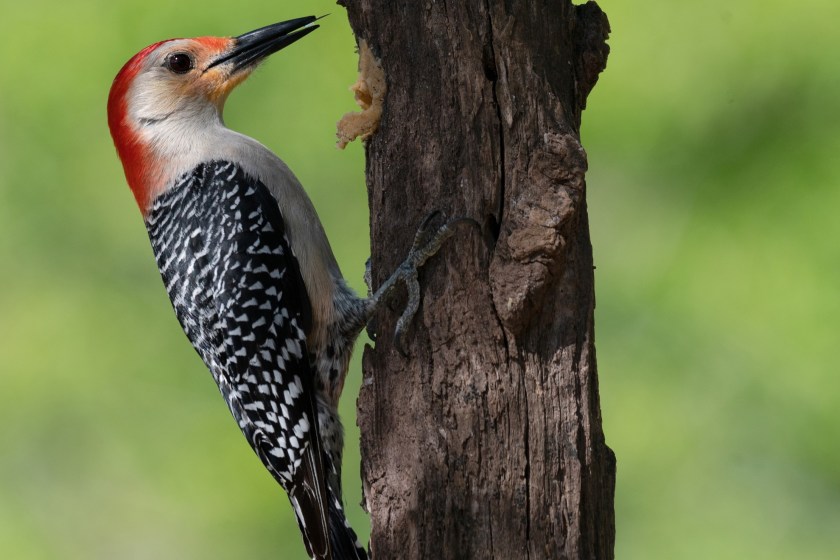
Shutterstock Image
Next on our list of toucan facts is this fun fact! When thinking of birds, the toucan might be related to, but the woodpecker never crossed my mind. However, it is the truth. Not only are they in the same taxonomic order (Piciformes), but they also share a lot in common. First, they share a forest with one another. Second, they each have two toes pointing forward and two toes pointing backward. That special type of footing allows both birds to be stable when moving through the trees. Additionally, they also both have long, narrow, feather-like tongues and mostly black coloring.
4. They Are Social Animals
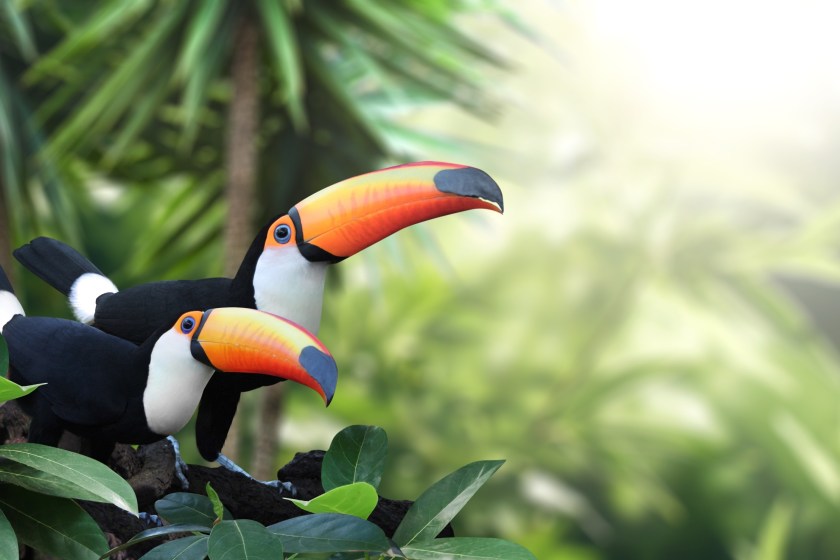
Shutterstock Image
They say birds of a feather flock together, and that is true for the toucan. The San Diego Zoo shares that "toucans travel in flocks of up to 22 individuals." It is also believed that these birds are monogamous, or at least while they are caring for their young. I find that romantic, my favorite bird is a monogamous bird who focuses on building a connection, finding a mate, and raising young. Can you say awe?
5. Toucans Got Their Name From The Sounds They Make
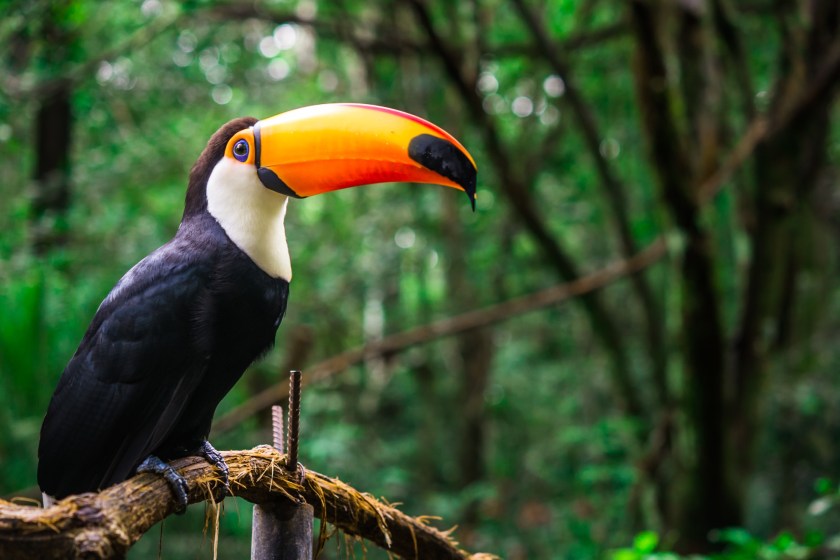
Shutterstock Image
Toucans are very vocal birds, and one of the sounds they make is a croaking noise. As the woman in the video describes, it sounds like a mix of a frog and a pig. TreeHugger shares that they are among "the world's noisiest birds." In addition to their croaking, they can also make tapping and clattering sounds with their beaks. Some species can even growl, bark, or bay.
6. There Are A Lot Of Types Of Toucans
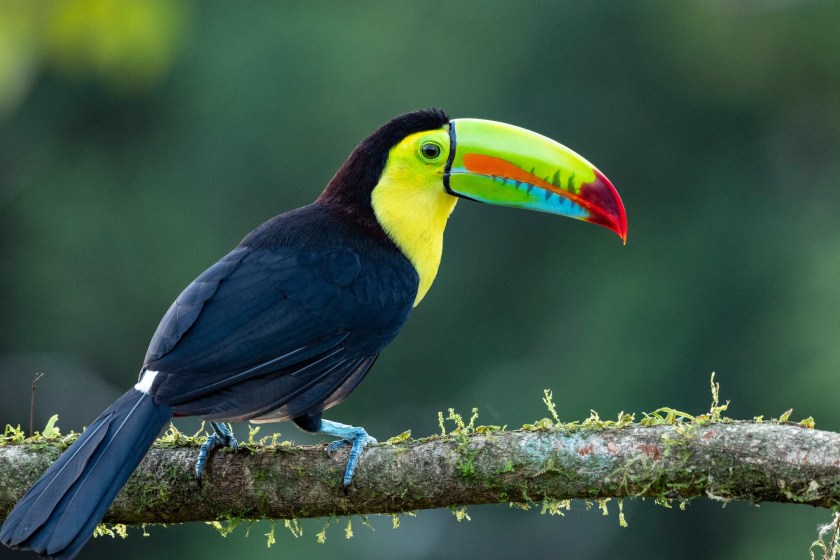
Shutterstock Image
There are about 40 species of this incredible bird. If you have seen a toucan in a zoo, you most likely saw a Toco toucan, as they are the most commonly seen in zoos. The Toco toucan is known for its large and colorful beak. However, all of the toucan species have a bill that is disproportionately large compared to their heads.
7. They Are Awkward Fliers

Shutterstock Image
While the toucan can fly, it certainly looks awkward doing so. That is mainly because of the size of their beak. While it doesn't impact their wings' ability to fly, it just looks like this massive beak that is pulling a bird behind it. It makes them appear somewhat uncoordinated or unbalanced in the sky.
8. Toucans Are Monomorphic
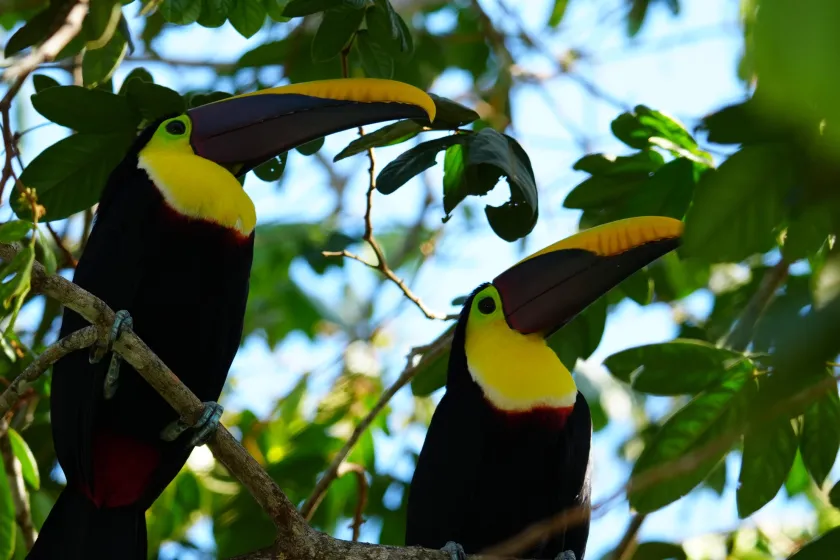
Shutterstock Image
If you don't know what monomorphic means, then congrats, this is one of those toucan facts that teaches you a new word. Monomorphic means that the males and females look the same. Meaning, there is no way to differentiate between the two of them from outward appearance alone. TreeHugger shares that "Research has shown that monomorphism is more common in animal species where successful social interaction in groups matters greatly."
9. They Help Rainforests Thrive

Shutterstock Image
The toucan is vital to the health of the rainforest. They feast on various native fruits and spread the seeds around through their droppings. This allows plants to continue growing and encourages the rainforest's diversity.
10. Toucans Are Perfectly Built For Surviving In The Rainforest
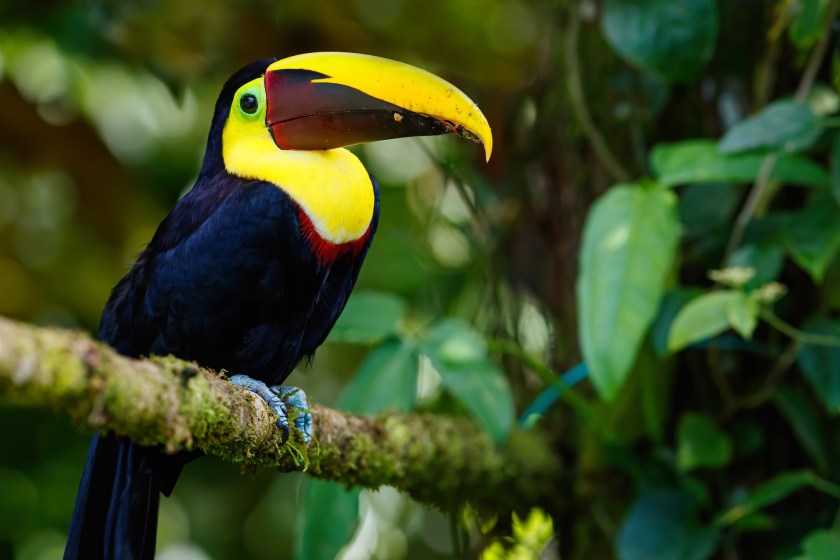
Shutterstock Image
Apart from their large, colorful beaks, toucans also boast colorful feathers. These colors help them to blend into their tropical habitat easily. Additionally, their short and compact bodies and short, strong legs allow them to rest in the trees easily. However, their wings are small, so they do need to flap a lot in order to fly. This is why you will see them sitting in trees more often than flying. They are attempting to conserve their energy.
11. They Have A Unique Diet
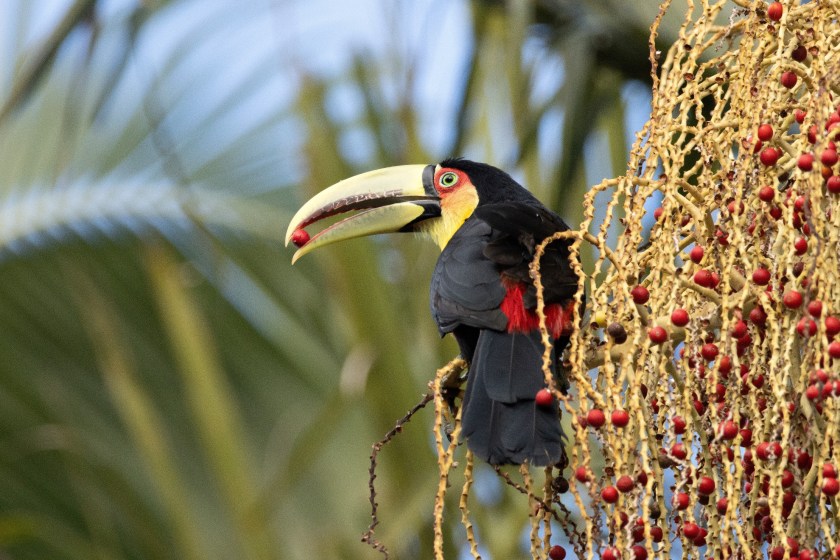
Shutterstock Photo
PBS shares that "toucans are primarily frugivores, meaning they feed mostly on raw fruits or succulent fruit-like produce of plants such as roots, shoots, nuts, and seeds." This early bird typically starts its day by visiting fruiting trees in its home area. Then, once they have appeased their appetite, they will venture off in search of new fruit sites. In addition to fruits, toucans also eat insects, small reptiles, bird eggs, and fish.
12. Toucans Are Facing Many Challenges
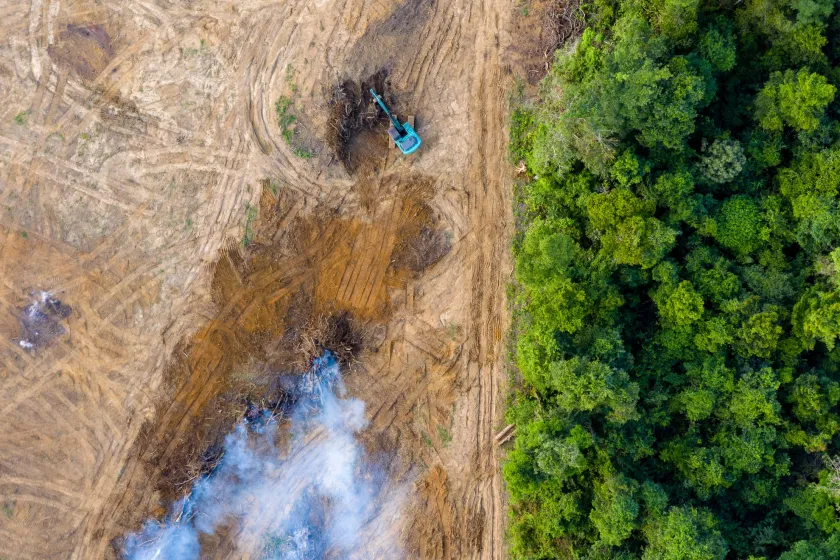
Shutterstock Image by: Richard Whitcombe
Last on our list of toucan facts, we have a bit of a downer. Toucans are currently facing many threats that put them at risk. Currently, habitat loss is the greatest threat to toucans. However, it is not the only one. In addition to their rainforest home being cut down for human use, they are also often captured for the pet trade or as trophies. If the humans aren't bothering them, then they have their natural predators to worry about. Some of the toucan's natural predators include forest eagles, hawks, owls, boars, jaguars, and margays.




